FARMS: Beetles
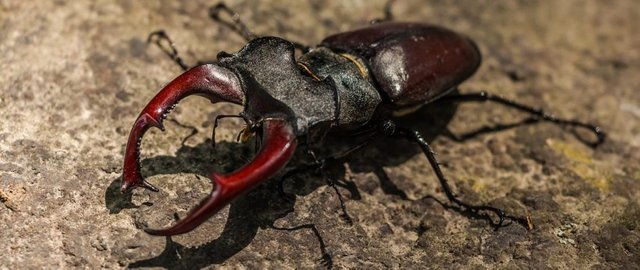
Beetles can be condemned in domestic, agricultural or forest pests.
Beetles are insects of the order of coleoptera. With more than 350,000 species described, this order is the most extensive of the entire animal world. Coleoptera are characterized by having a pair of modified wings with protective function, the so-called elytra, which are fully hardened to protect the second pair of wings, the back of the thorax and the abdomen.
About 3/4 of the beetle species are phytophagous, both larvae and adult stages, that live in or from vegetables, wood, mushrooms, and a variety of stored products, including cereals, tobacco and dried fruits. Because many of these plants are important for agriculture, forestry and houses, beetles can be considered a pest.

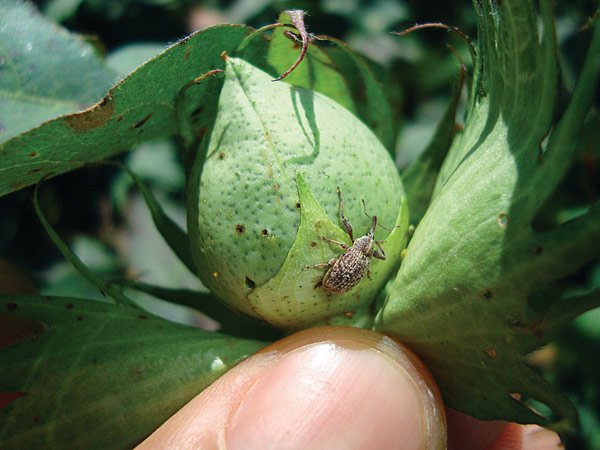
Some of these species cause significant damage, such as the cotton boll weevil (picudo), which feeds on buds and cotton flowers. The cotton weevil crossed the Rio Grande, near Brownsville, Texas, to enter the United States from Mexico, around 1892 and had already reached southeastern Alabama in 1915. By the mid-1920s it had entered all of the Cotton regions in the US, traveling 40 to 160 miles (60 to 260 km) per year. It remains the most destructive cotton pest in North America. It has been estimated that the income of the weevil to the United States has cost the cotton producers around $ 13 billion, and in recent times around $ 300 million per year.

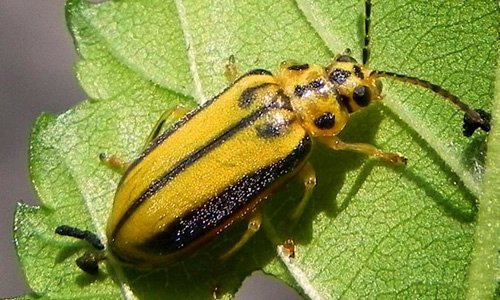
Many other species have also done great damage to plant populations, such as the bark beetle and the elm leaf beetle. The bark beetle and the elm leaf, among other species, are known to nest in elm trees. Bark beetles, in particular, carry the Dutch elm disease. The spread of Dutch elm disease by the beetle has led to the devastation of elms in many parts of the northern hemisphere, especially in Europe and North America.

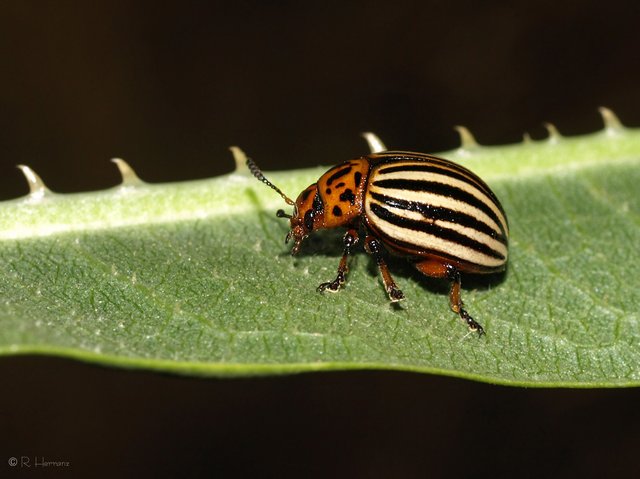
There are situations in which a species has developed immunity to pesticides, as in the case of the Colorado potato beetle, Leptinotarsa decemlineata, which is a notorious pest of potato plants. The crops are destroyed and the beetle can only be treated through the use of expensive pesticides, many of which have begun to develop resistance. In addition to potatoes, guests can be a number of plants of the potato family (Solanaceae), such as solanaceous, tomato, eggplant and pepper. The Colorado potato beetle has developed resistance to all major classes of insecticides, although not all populations are resistant to all chemicals.

Pests not only affect agriculture, they can also affect even houses, such as the death watch beetle, Xestobium rufovillosum, (family Anobiidae) a considerable plague of the oldest wooden buildings in Britain. Attacks hardwoods, such as oak and chestnut, always where there has been some decomposition by fungi. It is believed that the actual introduction of the pest into buildings takes place at the time of construction.

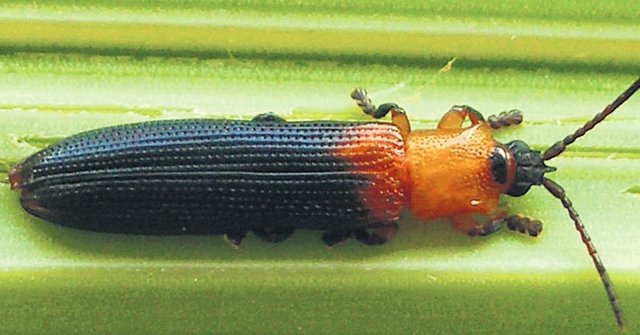
Other pests include the Brontispa longissima beetle, which feeds on young stems and damages mature plants and coconut palms.

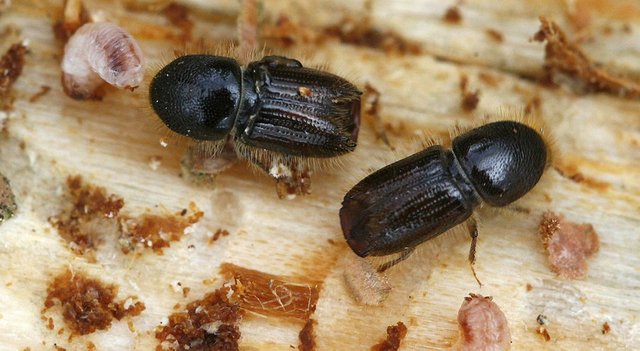
The mountain pine beetle usually attacks mature or weakened pines. It can be the most destructive pest of mature pine forests. The current infestation in British Columbia is the largest infestation Canada has ever seen.


The adult vine weevil is active only at night. They take semicircular snacks from the edge of the leaves. These cuts reduce the ornamental value of the plant. The larva sometimes damages shrubs and young trees feeding on the yolks and soft bark. The larva causes most of the damage. The smaller larvae feed mainly on the root hairs, but the larger larvae of the roots and the base of the stem. This prevents growth and eventually causes the plant to turn yellow and whiter.

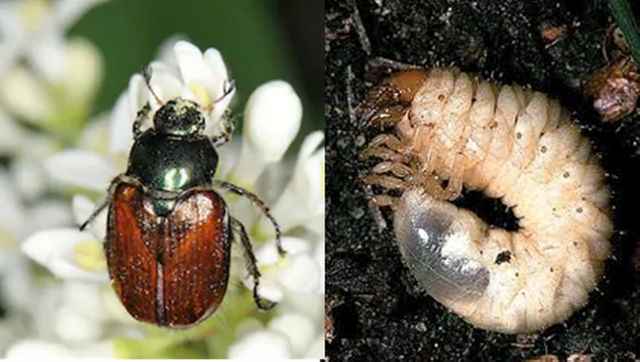
The pink beetle larva Phyllopertha horticola causes severe damage to the grass by feeding on the root hairs of the grass. This reduces the absorption of water and nutrients. In addition animals like birds, foxes and hedgehogs looking for larvae, damage the lawn seriously.

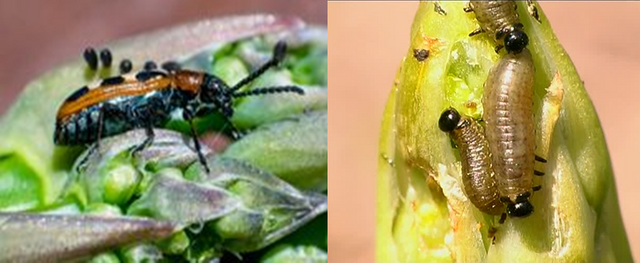
The larvae of the asparagus beetle feed on the aerial parts of the asparagus plant. The larva descends from the plant to hide in the ground and become a nymph. Adults only eat the leaves of the asparagus.


Adults of Capnodis tenebrionis feed on young stems and branches, causing problems in the nurseries of trees and young trees. However, the greatest damage is caused by the larvae when they penetrate the roots of the trees and feed on the bark causing the death of young trees. Adult trees are severely weakened or may even die within one or two years.
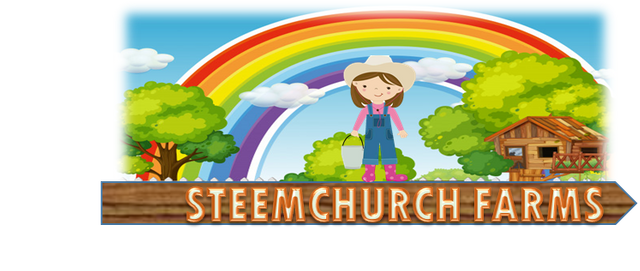
For more information visit:
http://www.escarabajopedia.com/escarabajos-como-plagas/
https://www.koppert.es/plagas/escarabajos/
If you got here ... Infinite thanks for reading me.
"God bless you and protect you"
